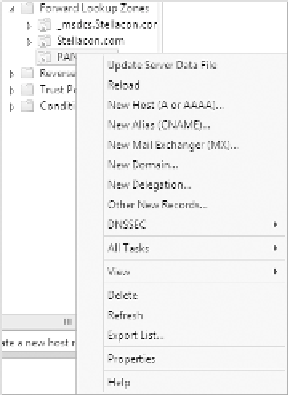Information Technology Reference
In-Depth Information
5.
Right-click your zone name and choose New Mail Exchanger (MX).
6.
Enter
mailtest
in the Host Or Child Domain field and enter
mailtest.yourDomain
.com
(or whatever domain name you used in Exercise 2.2) in the Fully-Qualified Domain
Name (FQDN) Of Mail Server field; then click OK. Notice that the new record is already
visible.
7.
Next create an alias (or CNAME) record to point to the mail server. (It is assumed that
you already have an A record for
mailtest
in your zone.) Right-click your zone, and
choose New Alias (CNAME).
8.
Type
mail
into the Alias Name field.
9.
Type
mailtest.yourDomain.com
into the Fully-Qualified Domain Name (FQDN) For Tar-
get Host field.
10.
Click the OK button.
11.
Close the DNS management snap-in.
DNS Aging and Scavenging
When using dynamic updates, computers (or DHCP) will register a resource record with
DNS. These records get removed when a computer is shut down properly. A major problem
in the industry is that laptops are frequently removed from the network without a proper
shutdown. Therefore, their resource records continue to live in the DNS database.
Windows Server 2012 R2 DNS supports two features called
DNS aging
and
DNS
scavenging
. These features are used to clean up and remove stale resource records of a
primary DNS zone. DNS aging and DNS scavenging flags old resource records that have
















Search WWH ::

Custom Search